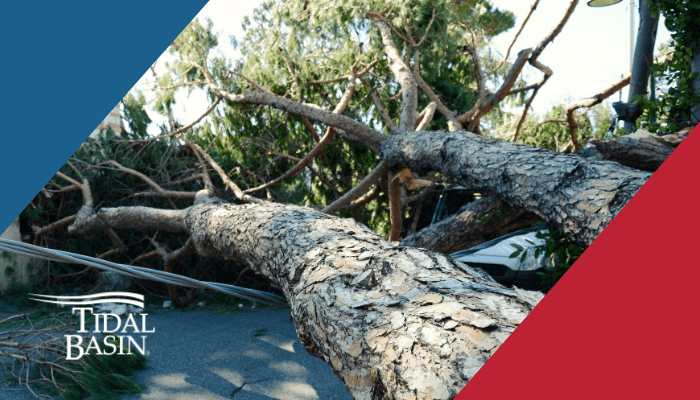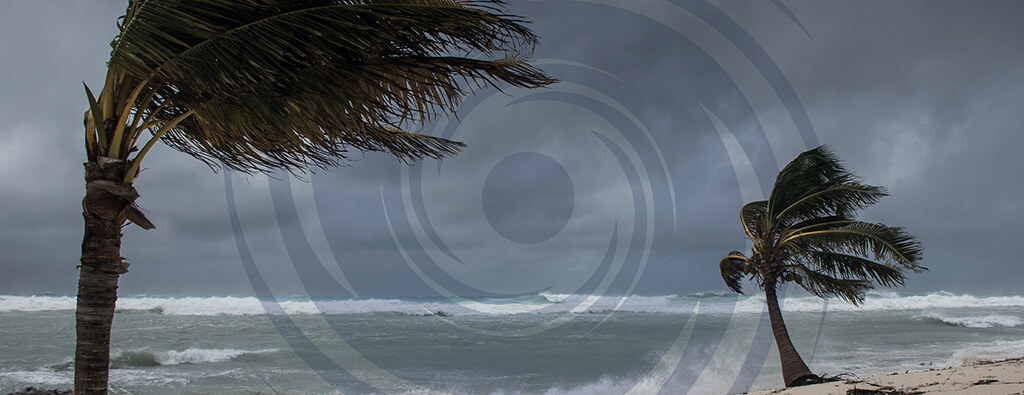Tidal Basin reviews the biggest disasters of the year
Tidal Basin has identified the Top Ten Disasters of 2020, from wildfires in the Western U.S. to the historic record-breaking hurricane season, and the greatest disaster event of the year, the COVID-19 pandemic.
Although there were many regional and local disasters around the U.S. this year, the events we have identified had significance due to historical records, the number of people impacted and the estimated financial impact to insured and uninsured property.
No. 6: Hurricane Sally
Sally was upgraded to a hurricane in mid-September as the system intensified in the Gulf of Mexico. The hurricane was the first to make landfall in Alabama since Hurricane Ivan in 2004. The eye came ashore on September 16th near Orange Beach, Alabama as a strong category two hurricane with winds near 105 miles per hour. The system produced devastating rainfall from the Florida panhandle to Mobile with some areas receiving nearly 20 inches of rainfall.
Escambia County in Florida received some of the greatest impacts from the storm as Sally’s intense winds caused significant storm surge. The system damaged marinas, boats and even tore barges away from their moorings in the Bay of Pensacola. The barges damaged the Pensacola Bay Bridge which connects the mainland to Pensacola and Destin beaches. Florida Governor Rick DeSantis said repairs will likely take months. “We understand how important that is for folks getting to and from Escambia County so its priority, but at the same time it has structural damage, so it’s a little bit more challenging and it means we’ll have to rebuild major parts of the bridge,” he said. The Florida Department of Transportation anticipates repairs to take until Spring 2021. The damages from Sally are expected to surpass 6 billion with the majority of the damages coming from the Florida panhandle and southern regions of Alabama. The storm’s heavy rains and winds also severely impacted farmers in the region who lost crops from the excessive rainfall.
No. 5 Hurricane Isaias
Hurricane Isaias made landfall on Ocean Isle Beach, North Carolina on August 4th as a category 1 storm. The system is most noted for its extended swath of damage from the Carolinas to New England. The storm produced tropical storm force winds between 40 to 70 mph across the mid-Atlantic region. Peak wind gusts in New York were near 70 miles per hour knocking out power to an estimated 300,000 Con Edison utility customers, 180,000 of those in the city of New York. It took the utility about week to ten days to restore outages. “High winds knocked down trees and limbs impacting our infrastructure – poles and transformers,” said Con Edison President Tim Cawley. The outages were compounded by excessive heat in the days following the storm. The utility had not experienced that many outages since Hurricane Sandy impacted the region in 2012. “We recognize the hardship that even a short outage can have on peoples lives and realize extended outages are extremely difficult and frustrating for our customers,” said Cawley.
Isaias produced over 30 tornadoes, with the hardest areas in the Carolinas, Maryland, and Virginia. The storm system is responsible for killing eighteen, 15 on the U.S. mainland, 1 in Puerto Rico, and 2 in the Dominion Republic. Isaias resulted in behind five billion dollars in damages in the U.S., the Bahamas, and Caribbean.
Stay tuned for #4 on our list of the Top Ten Disasters of 2020
To view what made our Top Ten list so far, click below:



